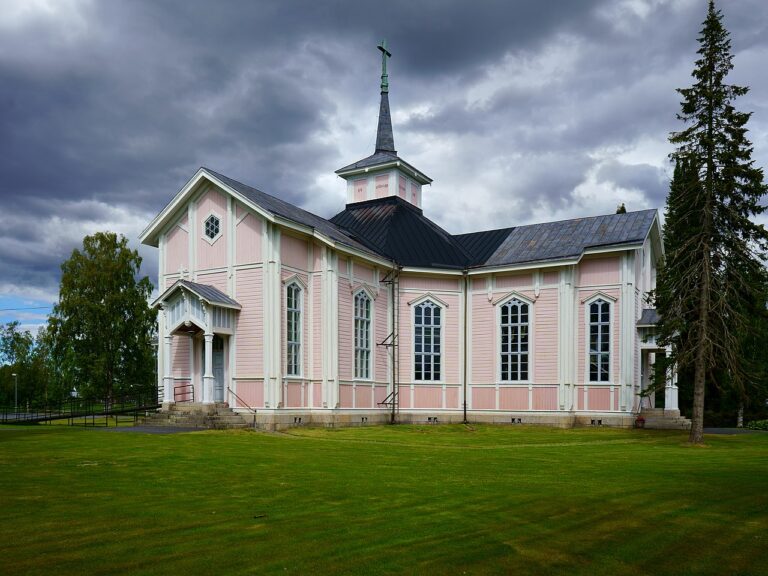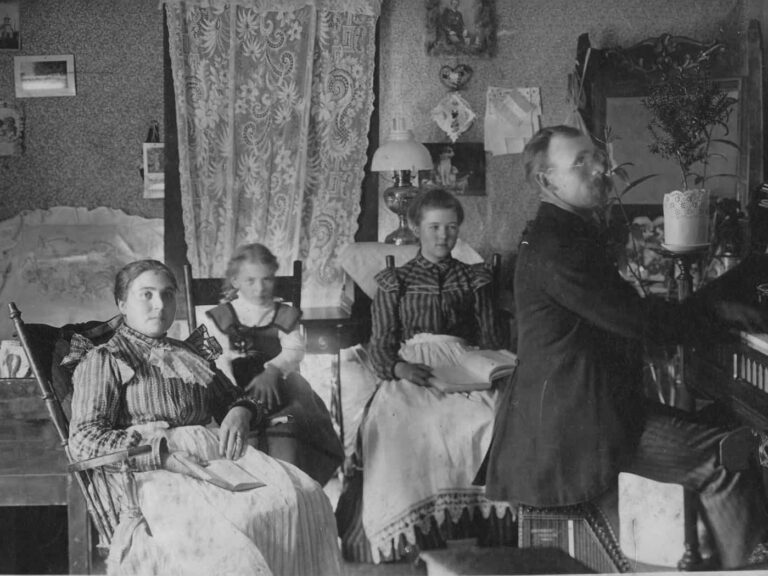“Rödsöboken”, by Ole Granholm
English translation by June Pelo
The great emigration to North America began at the close of the 1800’s and the beginning of the 1900’s. It was quite substantial from Swedish-speaking Österbotten. During the peak period 1880-1899, a total of 1,462 people from Karleby obtained passports to travel to America. Statistics for 1865-1920 show that nearly 3,000 people emigrated from Karleby and some emigrated to Africa, Australia and South America as well as to America.
The emigrants wanted to go to the areas where their relatives and friends had previously gone. They had settled in many locations, such as Bronx in New York, Palisade in Minnesota, Coos Bay (Marshfield) in Oregon, Eureka in California and Grand Rapids in Michigan.
During the 1800’s Finland was in the second phase of a demographic evolution. The birth rate grew and more children reached maturity than previously. This led to hardship earning a living in a great part of the country. The situation became especially difficult in areas where small farms dominated, such as Rödsö village.
The years 1867-69 were bad harvest years when the crops were worsened by a very rainy summer in 1867, severe drought and early frost nights came the following year. Many mouths needed to be fed. The situation was worse for the poor and needy people who became desperate. The gap in income was great and Russianization politics created discontent.
Instead of Russian obligations, many chose the way to the West. The lack of arable land in Finland, especially in coastal villages in northern Swedish Österbotten was also a contributing factor. In America free land was promised according to the “Homestead Act”, a law that implied that one was allotted land which he was allowed to use for five years, then he received full ownership of the land. America used a lot of publicity to get as many emigrants as possible. There were many mines and factories, railroad construction required workers, cities and homes were being built, and workers were needed, both skilled and the unskilled. Housekeepers were in great demand.
Industries cooperated with shipping companies that had local agents in port cities. All of this was written about in Norra Posten and Österbottningen. The agents helped with travel, providing information on services and the sale of tickets. America was portrayed as a paradise. The greatest impression came from American letters. They told of happiness and success. They wrote reluctantly of failures, but that the people managed to cope over there. The letters were circulated among the farms. They read them over and over, and many were enticed to go to America. Pictures were often enclosed with the letters, often from the father in the family who had traveled ahead and established himself. Then the rest of the family followed him.
Travel to the Promised Land
The first emigrants traveled by sailboat that often carried cargo. People traveled in the cargo hold and the journey could take as long as three months. Seasickness and scurvy were common among the emigrants who were not used to travel. The smell of feces and filth was prolonged. When the number of emigrants increased, ships were built solely for taking passengers and the journey became more endurable. A port in England was established as a stop before continuing the long voyage over the Atlantic.
The railroads were in full development in Finland and the road network was improved. People no longer had to travel only by horse and wagon. In Gamlakarleby it was possible to take a train to go south. Hangö was an important point of departure for our emigrants to America. The coming of steamships greatly shortened travel time. Then the trip to America took only twelve days. After 1880 the emigrants traveled solely by steamship. In 1915 the America-Line was formed, which made travel much better. One could now travel comfortably to New York.
Travel to Ellis Island
Whatever the conditions or how fast ships traveled, the ultimate objective was Ellis Island. Before Ellis Island became the emigrant’s final stop, two other places were used: Castle Garden and Barge Island. Barge Island was used for only a short period when the Ellis Island reception hall burned and had to be restored. When the destination was reached, one had to meet customs officers, passport inspectors and public health authorities. Everything was checked. Everyone who entered the country had to be healthy and fit. Those who weren’t cleared by health authorities were sent home. Most of the emigrants passed inspection.
Many of the emigrants from the Karleby area supported themselves as carpenters, loggers and construction workers. Some became foremen or trained to become building contractors. Some worked in the mining and fishing industries. The people went to America to work. Farmers who bought land but didn’t have the money to buy equipment occasionally took work as loggers. Then they earned the money to use the land and build their houses. Most of the women took jobs as housekeepers. Many also worked as seamstresses and washerwomen.
Search for a Better Future
In 1866 farmer’s son Axel Johansson Harald took a passport to America. In July 1880 farmer Adolf Adolfsson Kankkonen and wife Edla Sofia traveled to America. In June 1881 farmer Anders Johansson Härmälä took a passport to America for five years. His twelve-year-old daughter Johanna traveled with him on the same passport. In may 1882 Matts Herman Mattsson Lidsle took a passport to America for two years. On his own passport Anders Viktor Härmälä (17) traveled at the same time as his father. The Härmälä children didn’t live very long in the new country. Son Anders died the same year he arrived and daughter Johanna died two years later. Anders Johansson’s wife Lena Mattsdotter Härmälä was left in Finland with five children born between 1871-1880. In May 1882 she took a passport to America with the five children.
In Astoria, Oregon our countrymen founded a large cooperative undertaking. It was known as Union Fishermen’s Cooperative Packing Company, and it was involved with catching, canning and the export of salmon. During 1891-1913 Frans Kankkonen worked as the first director of the company. He was born 1864 and emigrated to America, as well as his brothers Carl Villhelm and Matts Fritiof. The brothers were building contractors and built St. Mary’s Hospital in Astoria.
The American Package was Welcomed
The emigrants were welded together through the Swedish language, its customs and its religion. The built churches and maintained their own congregations. Terjärv church in the Bronx is an example of this. There were Swedish-speaking newspapers such as Finska-Amerikanen and Norden that supplied news from the homeland. Letter contact and the “American packages” are something that comes to the mind of Rõdsö residents who have American relatives. Previously people were eager with correspondence and some letters have been preserved a long time. American packages were welcomed. They included cloth, clothing, dried fruit, cans with Maxwell House coffee and chewing gum.
Documentation of the destinies of the emigrants has been included in local historical research. The fate of many emigrants is unknown and contact with many emigrants and their descendants has been lost. Now it is possible to find ones Ostrobothnian or American family. The internet has been of great importance in this work.





